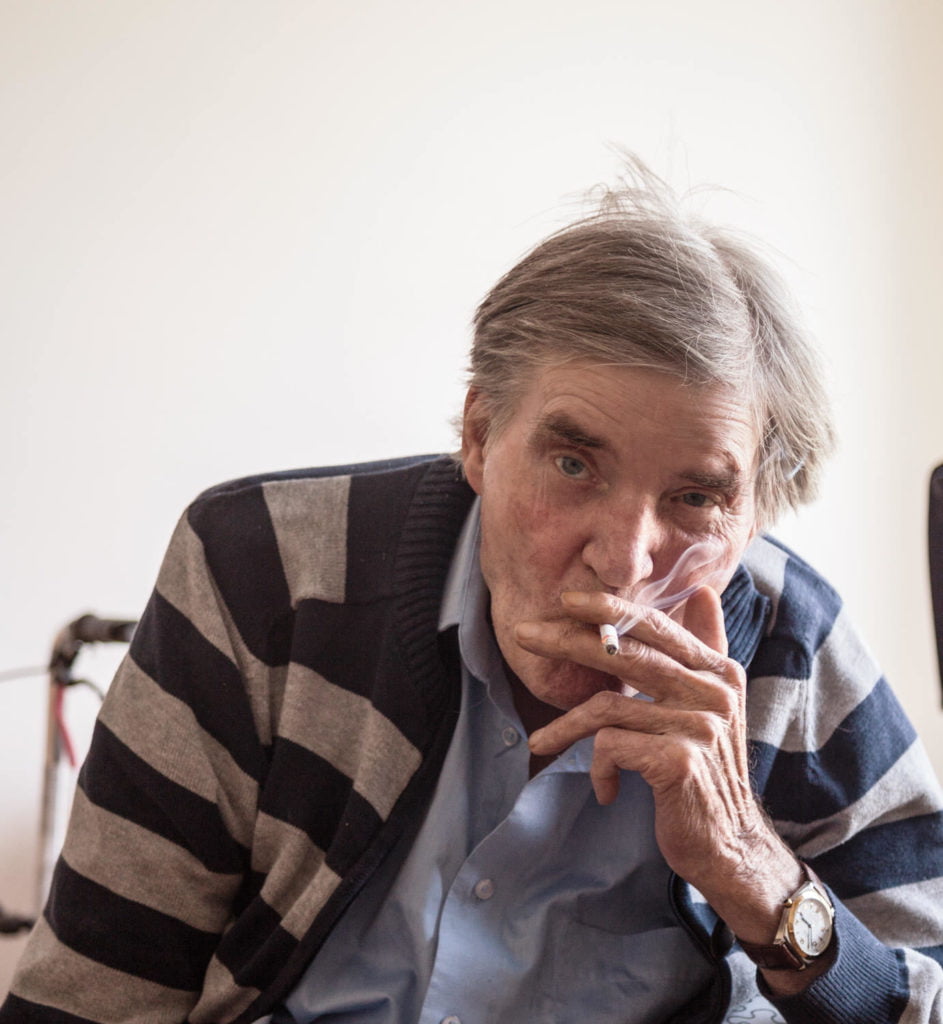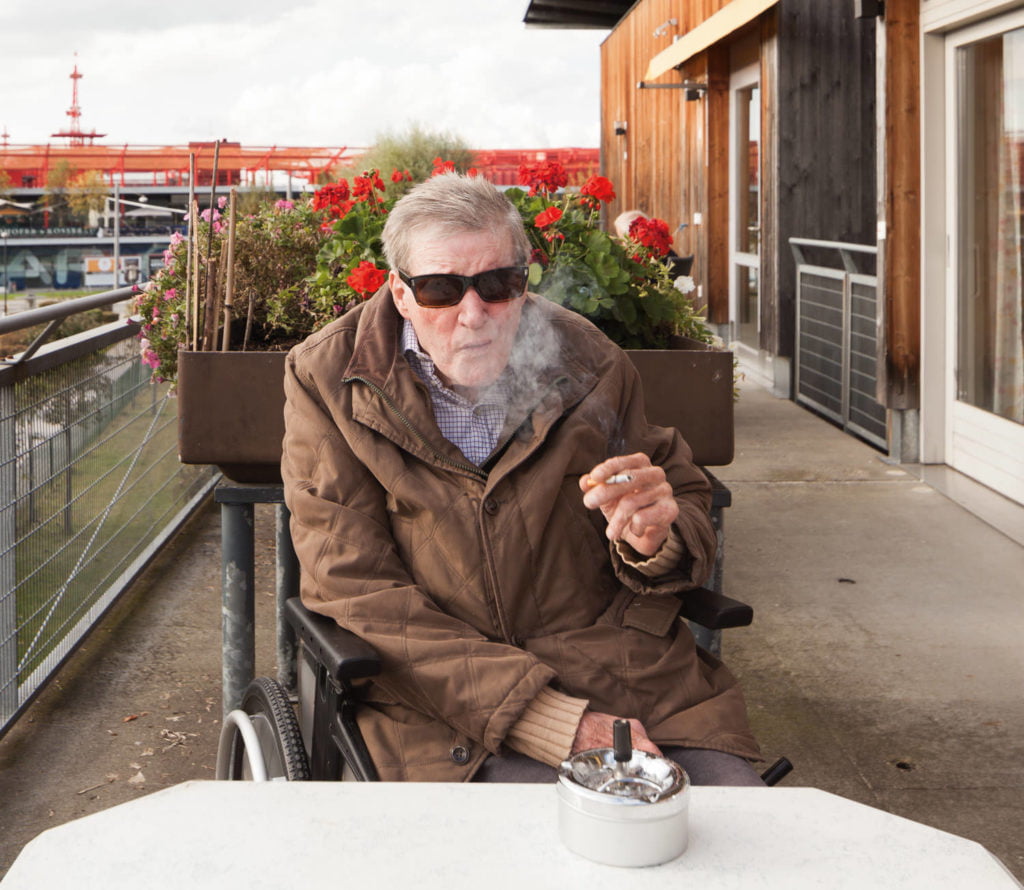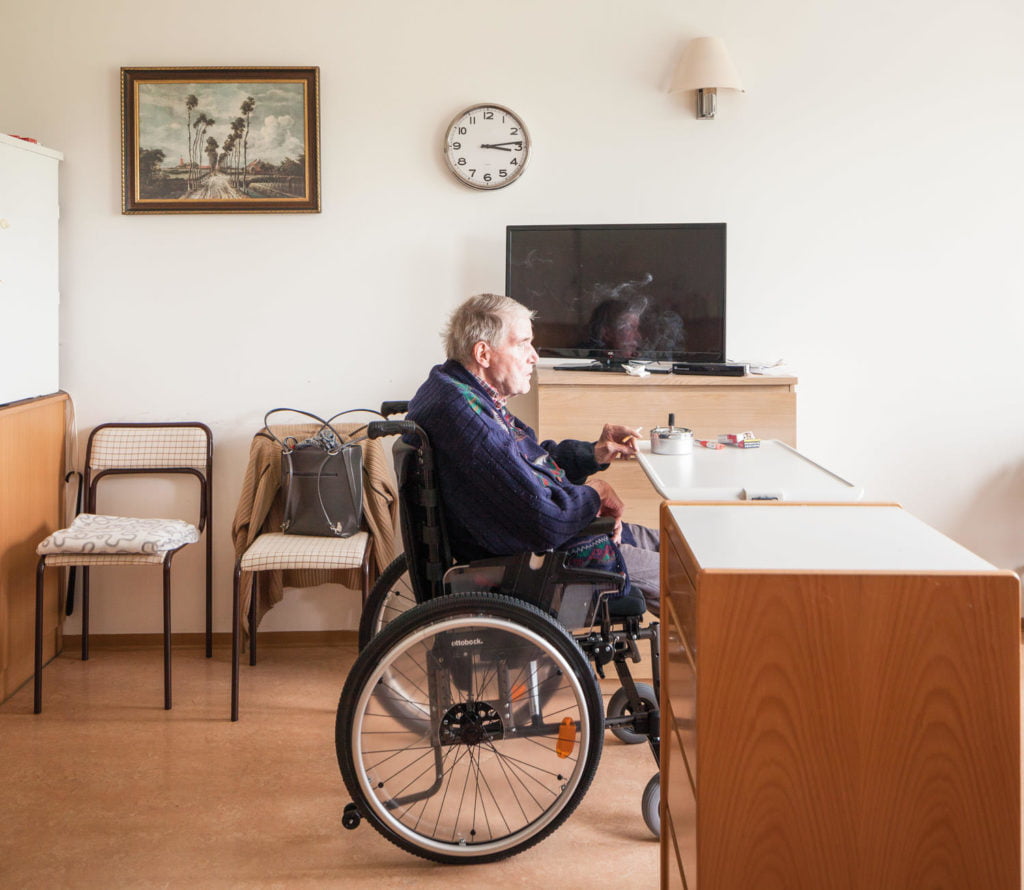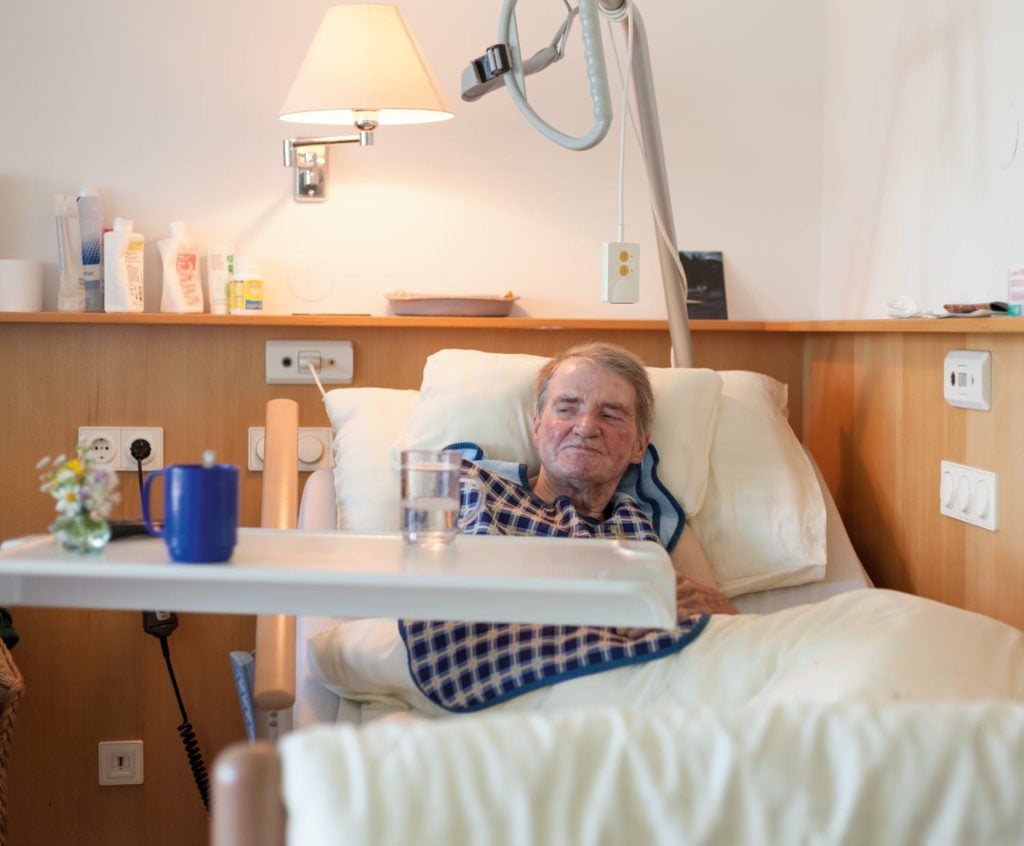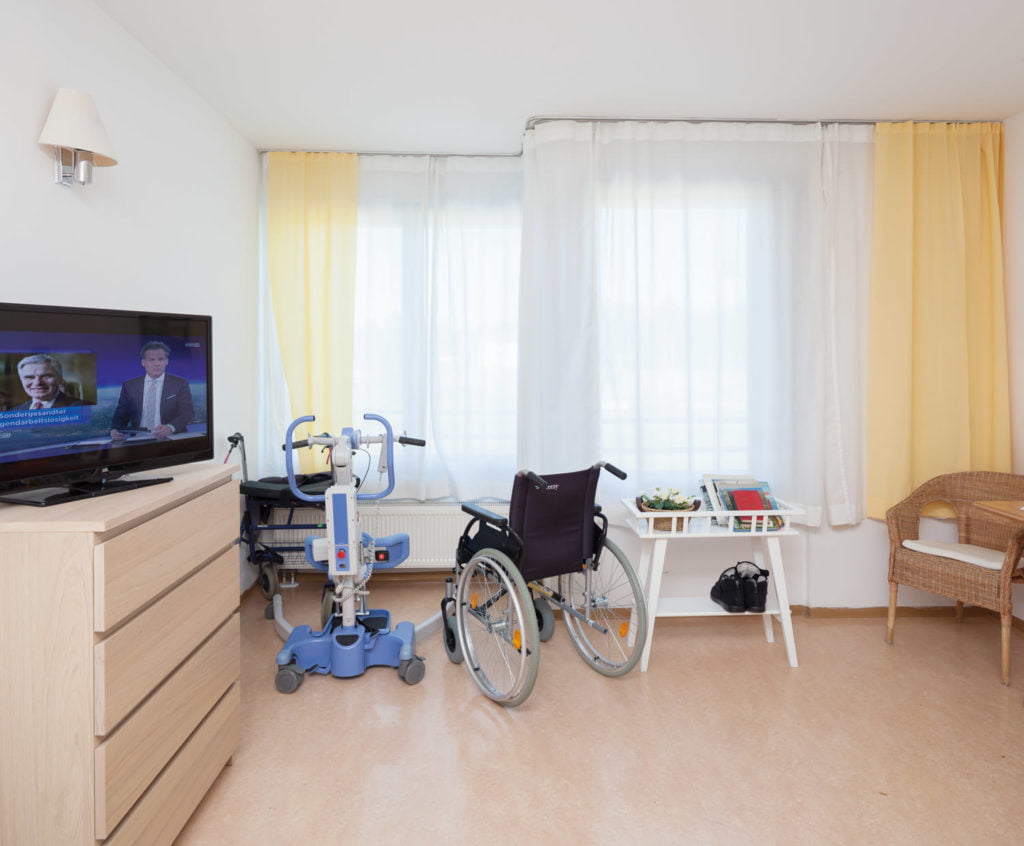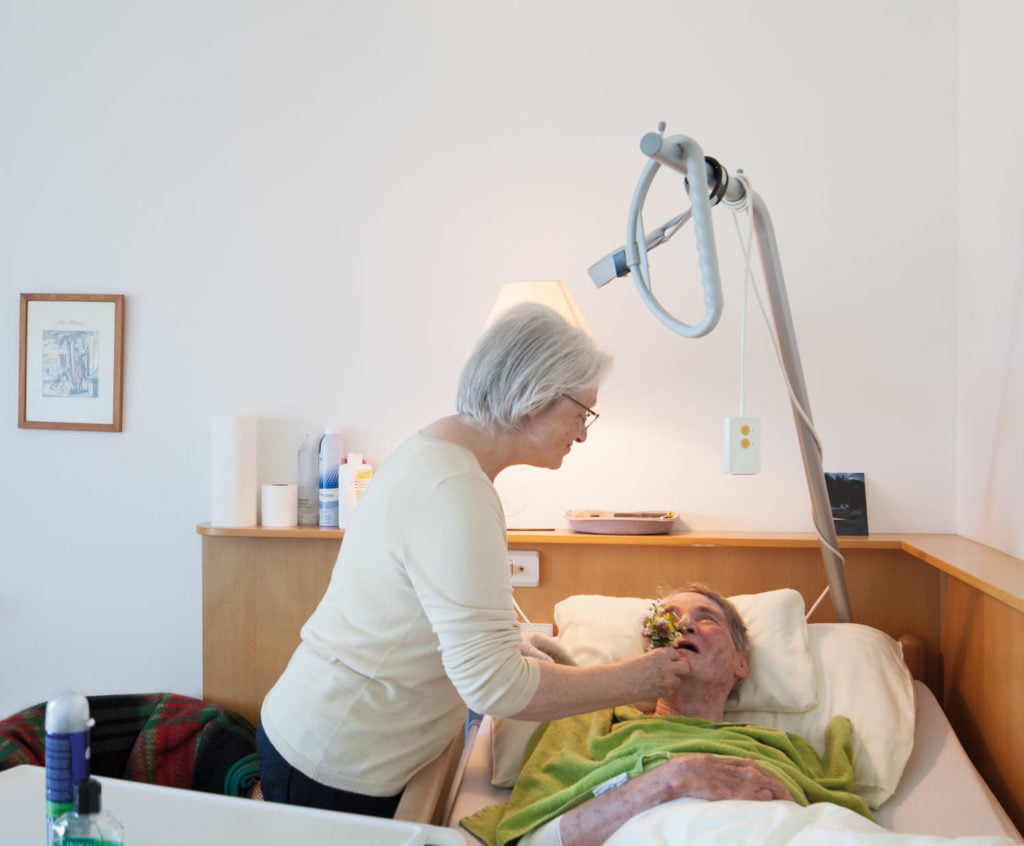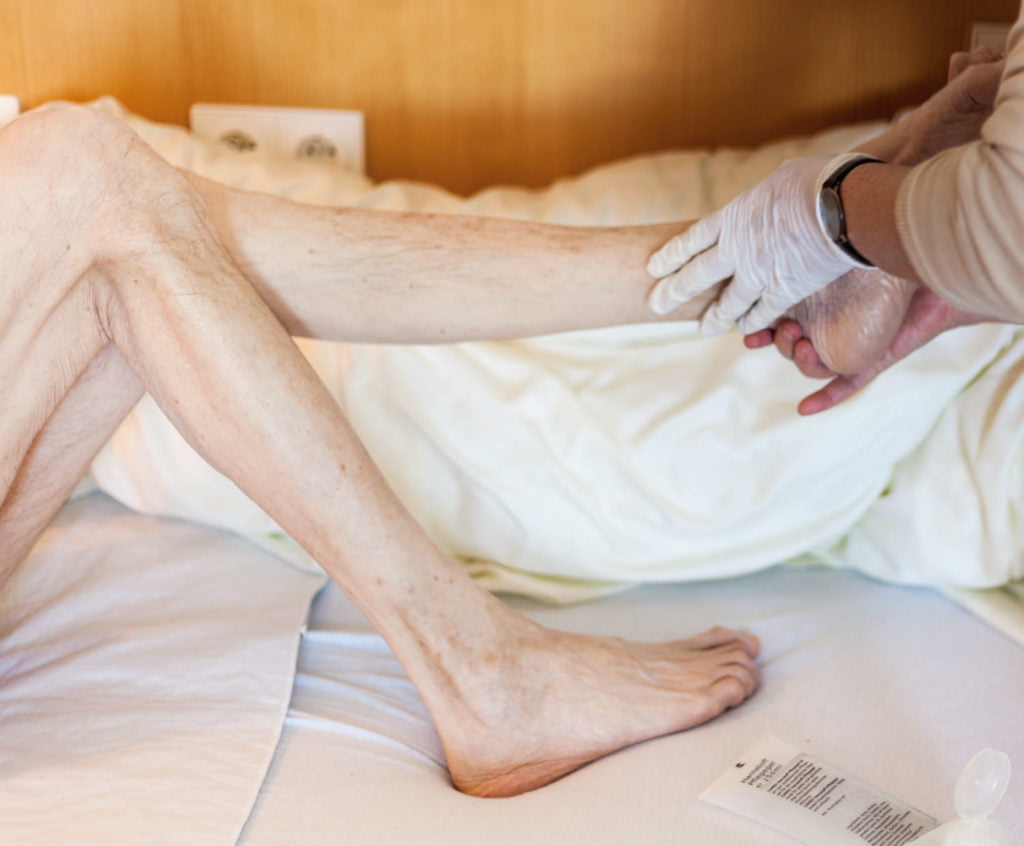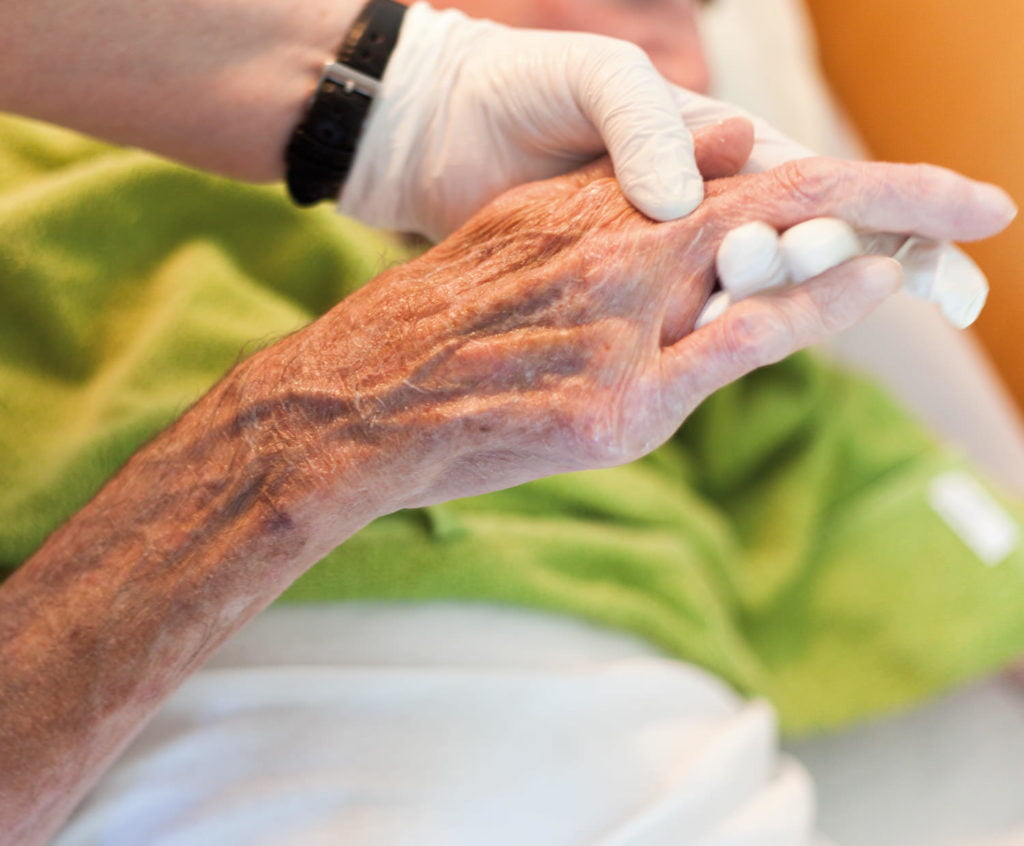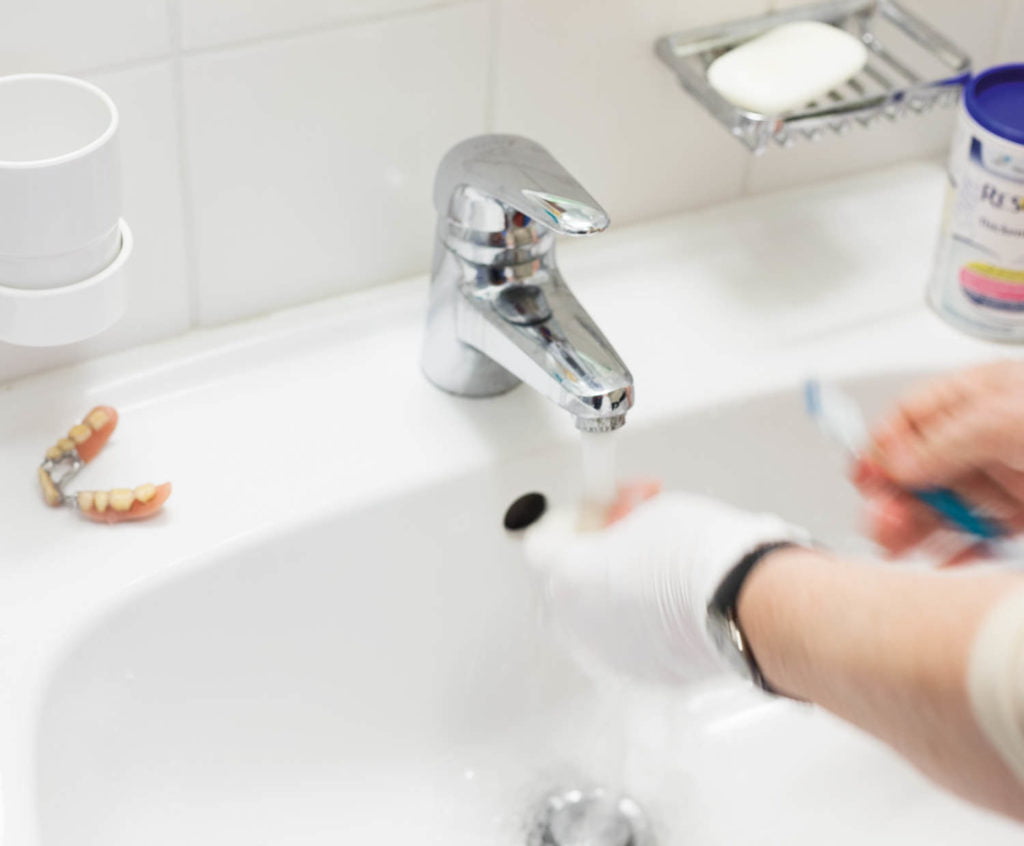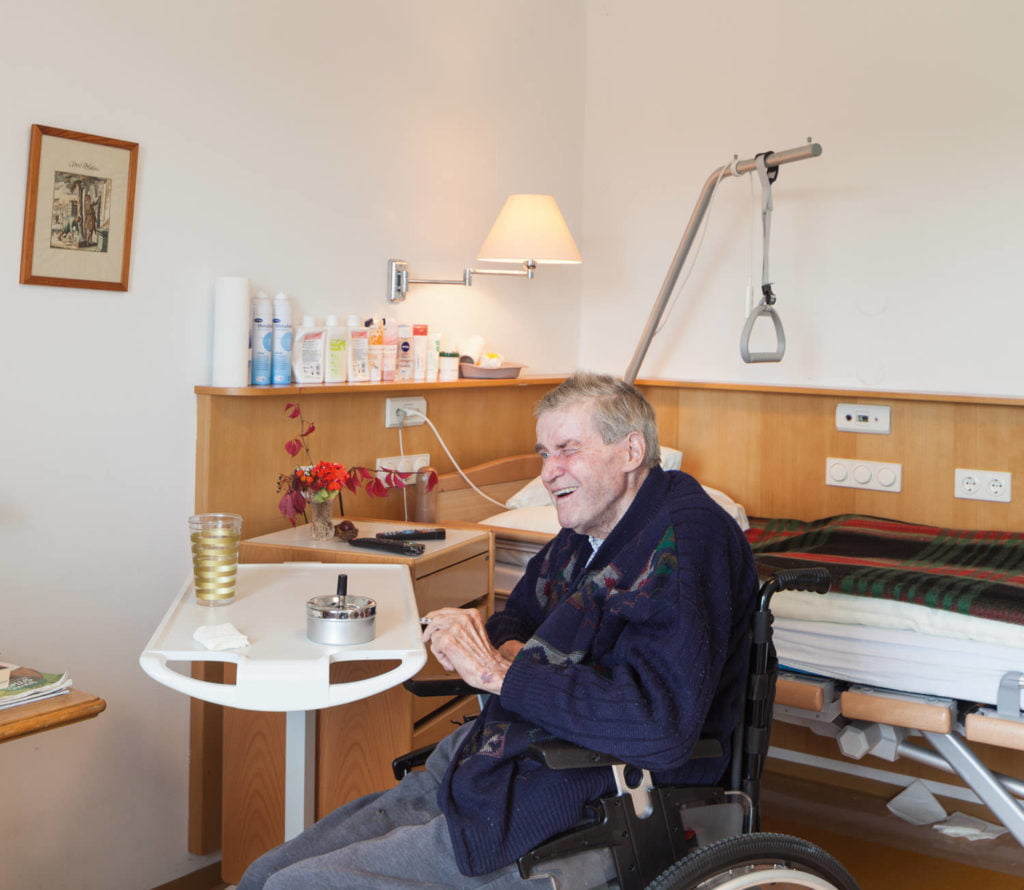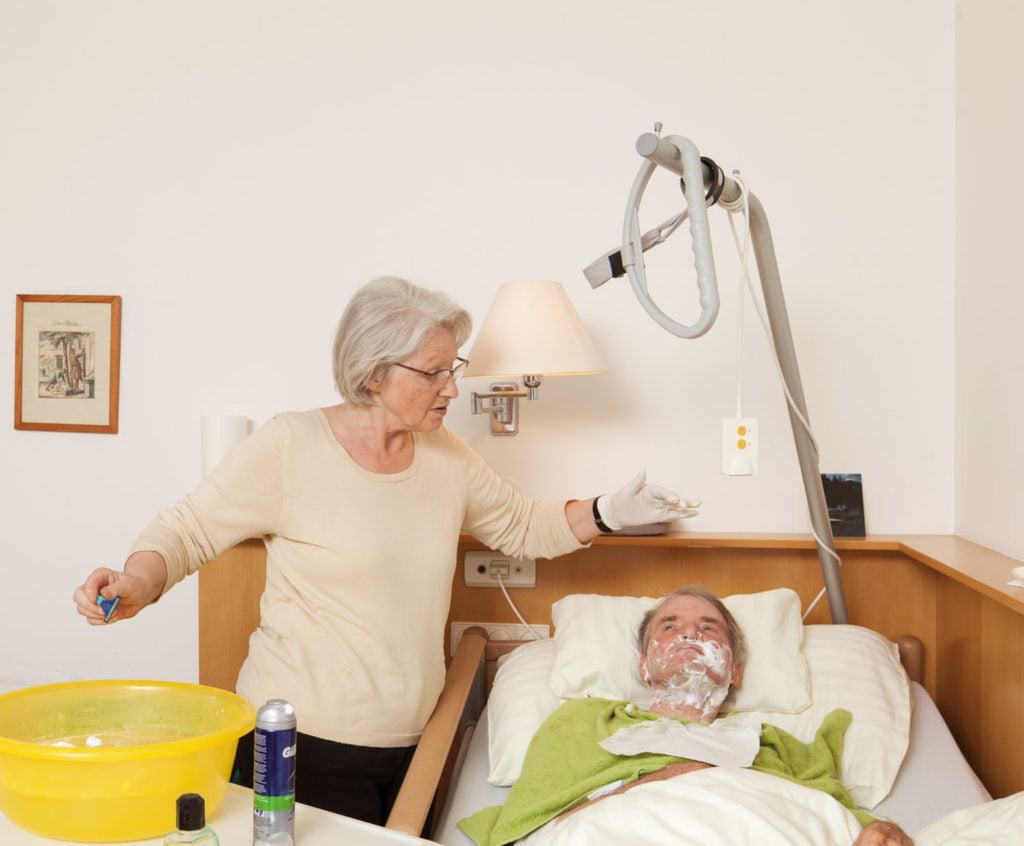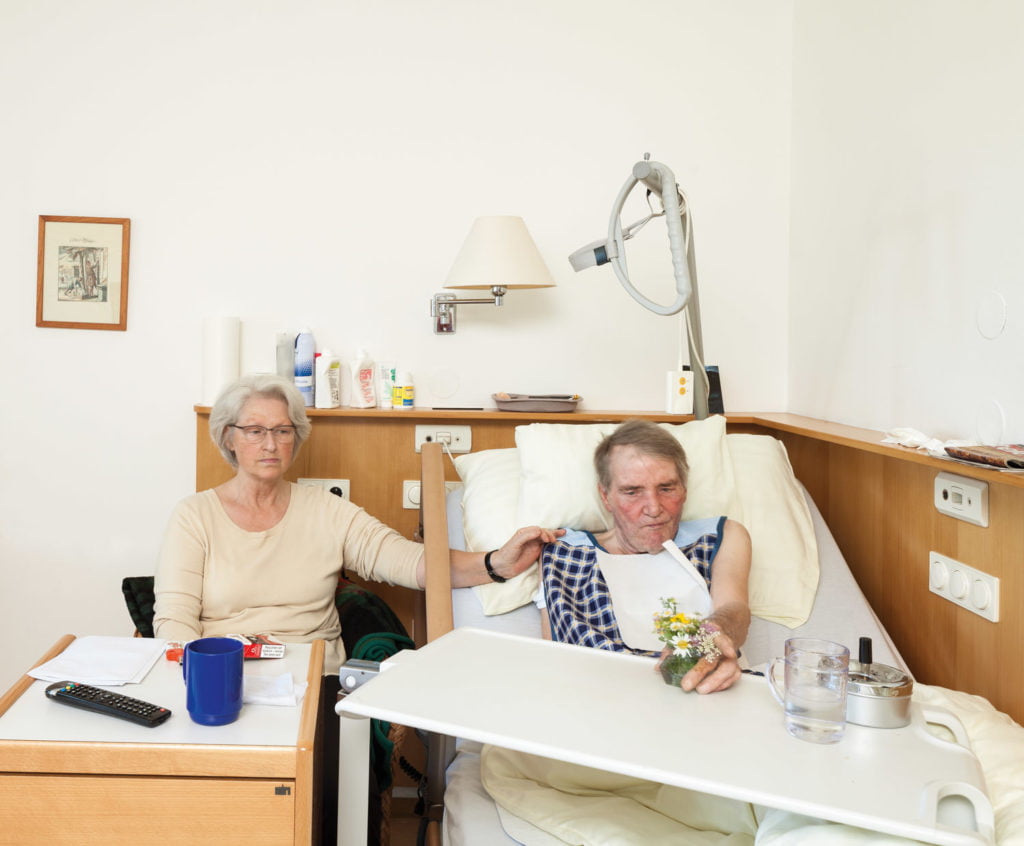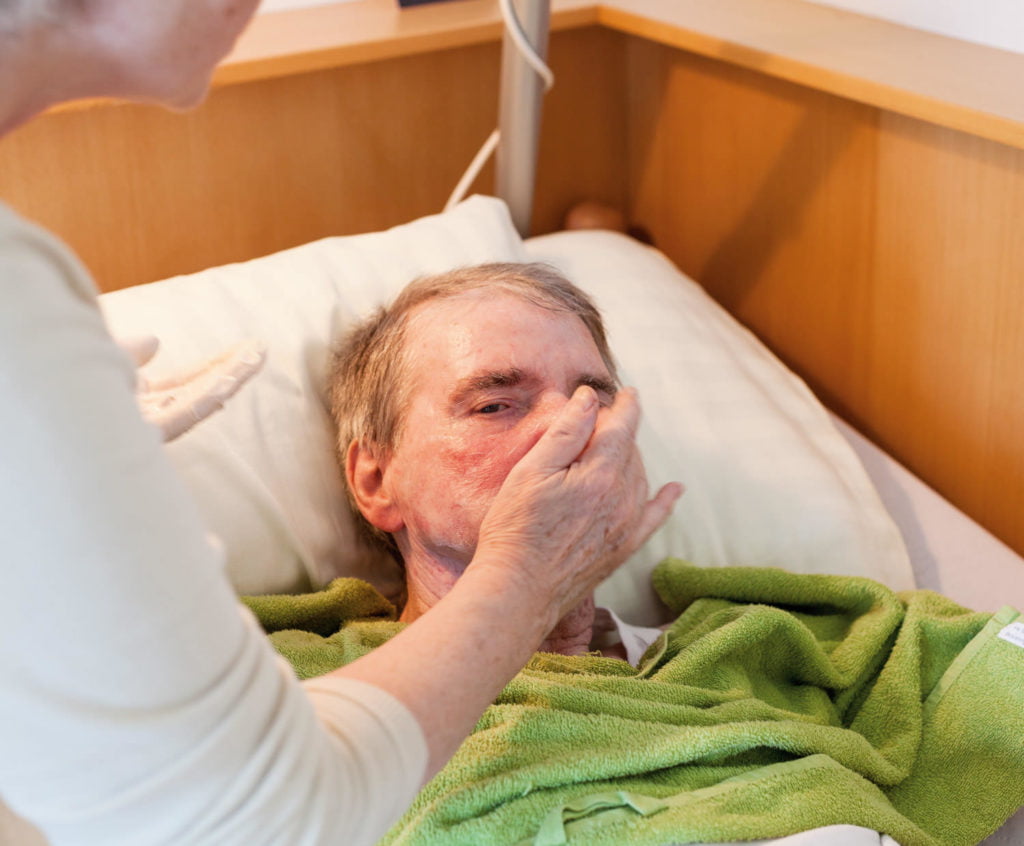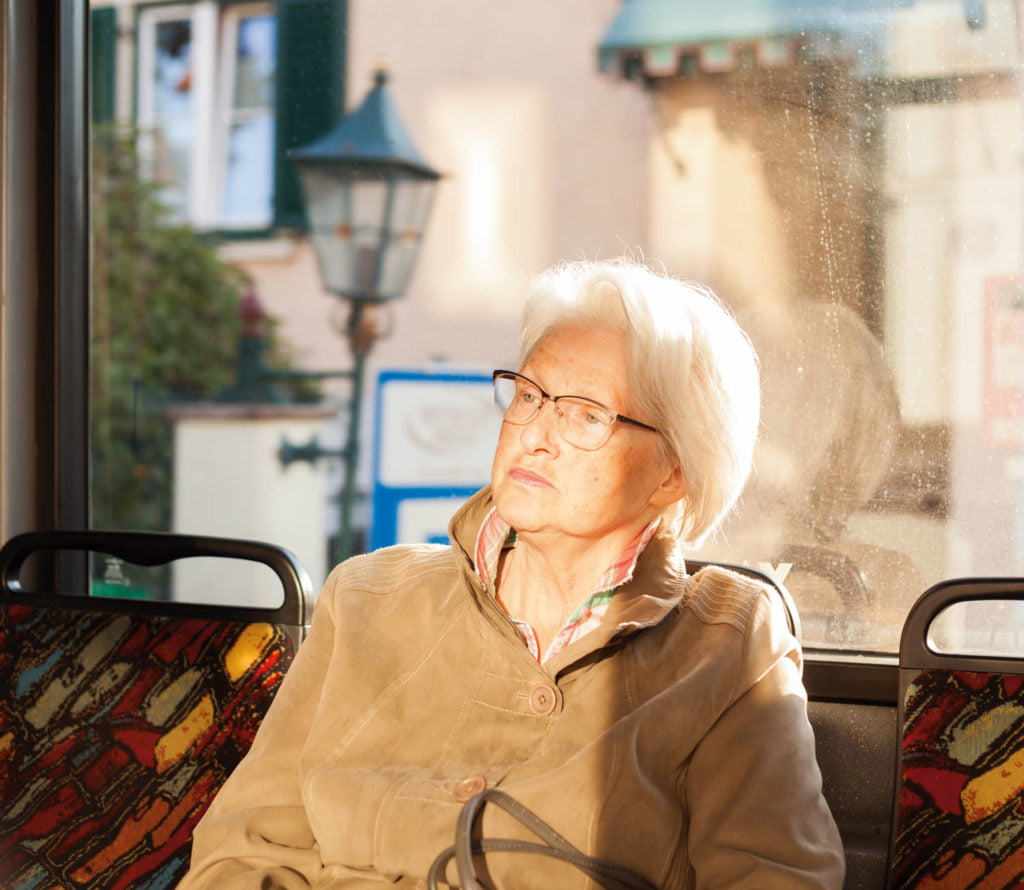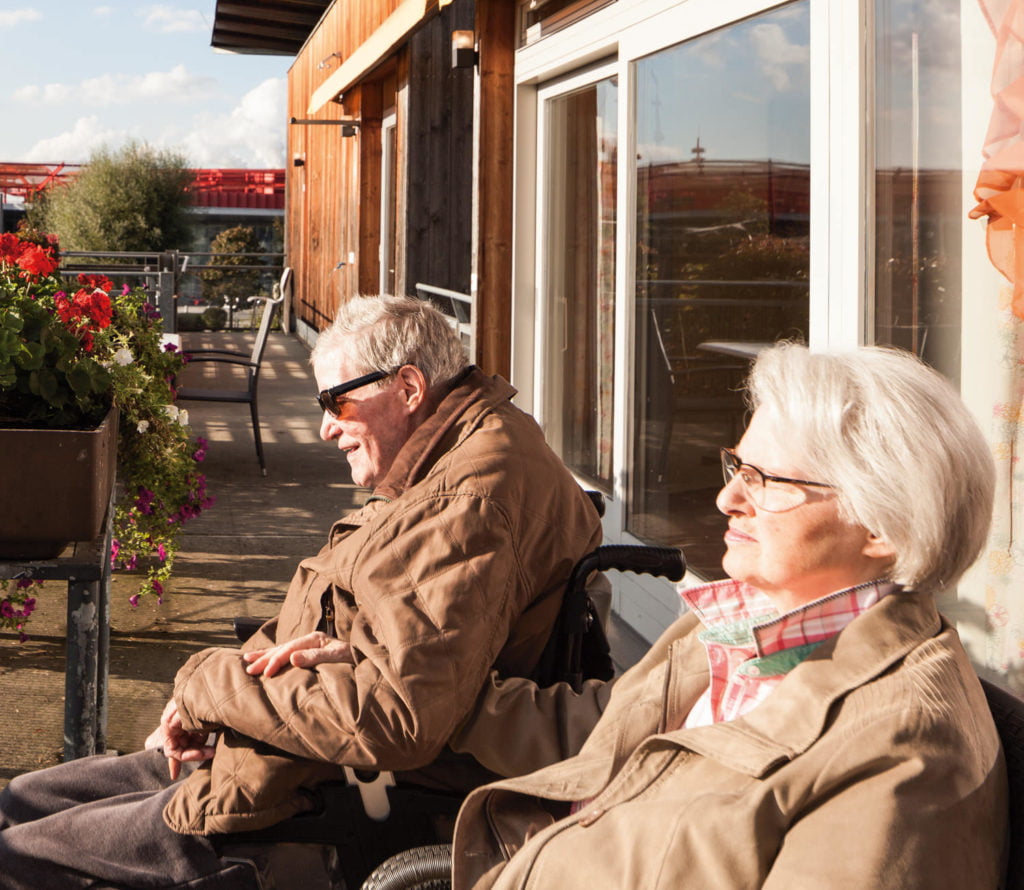Rudolf Strobl
Bolaring
Irgendwann begann ich, meine Eltern zu Hause zu fotografieren. Wir stellten Situationen nach, die wir erlebt hatten. Situationen, die zu unserem gemeinsamen Alltag gehörten.
Gegenstände und Innenräume wurden genauso Teil unserer Geschichte wie die Porträts meiner Eltern selbst. Auf den Fotografien wurden meine Eltern zu Fremden. Die Bilder waren ihre Abbilder. Eine Inszenierung.
Inzwischen lebt mein Vater im Seniorenwohnheim Bolaring. Meine Mutter besucht ihn regelmäßig und bringt ihm Obst oder Süßes und Zigaretten. Oft habe ich das Gefühl, dass mein Vater immer rauchen kann, immer.
Wenn ich sie besuche, bin ich zwar willkommen, aber nicht mehr Teil ihrer Rituale. Ich wollte wissen, wie es ihnen in dieser neuen Situation geht. Wahrscheinlich fotografiere ich deswegen ihren Alltag.
Rudolf Strobl
Bolaring came about as a result of Rudolf Strobl’s long-term project entitled Sundayland, a photographic portrait series of his parents, whom for many years he saw only in his free time, at weekends. This latest photo series focuses on the photographer’s father, who has been living in the eponymous old people’s home since 2014. Bolaring reprises the authentic narrative form of Sundayland: here, too, it is structured as a hybrid form of documentary and staged photography, using the genres of portrait and still life. The photographs were not the result of detached observation, but the direct result of the relationships between all the participants, with the photographer as someone personally involved. Indeed, the project is not just about his father, but also about his caring, nurturing mother, and the photographer’s own personal reflections. With unembellished openness and a sensitive approach that is never indiscreet, Strobl has created intimate, diary-like live portraits which, beyond the private sphere, address social taboos such as illness, ageing, and death as a social record, not to mention our longings and fears in this regard and our strategies for coping with our existence and our inexorable demise. They depict the vulnerability, loneliness, limitations, and loss of control of someone who is no longer able to keep pace with the world they were accustomed to. And so the father’s gaze is mostly lowered, or averted, visible in profile only, or obscured by sunglasses. But Strobl also shows the sense of comfort and warmth, the cohesion, and the safety that a social community such as a family is able to provide. It is moving to see the photographer’s mother trying to make the austere nursing home room more cosy. But the difficulties of family relations are palpable nonetheless, the way in which fixed roles are allocated, and the dependencies. One photograph shows a drawn curtain, referencing the lightbox work entitled Vorhang [Curtain] (2012) and the series Fenster [Window] (2014) in which Strobl reduced the rooms of his childhood to a succession of drawn curtains. They represent the cocooning and idyll of one’s own home, but also, for all the apparent transparency, the isolation from an outside world supposedly perceived as threatening. And all that’s left for the photographer’s father in his care home is the television set as a ‘window on the world’.
It is not least about the question of the veracity of the photographic image. Does it reflect real life or is it the image of a role play? If life is a state between reality and appearance, photography would be a worthy representative…
Petra Noll-Hammerstiel, geboren in Gelsenkirchen in Deutschland, ist freie Kuratorin und Autorin für aktuelle Kunst mit Schwerpunkt Fotografie und Medienkunst.
Sie lebt in Wien.
www.kunstnoll.de
